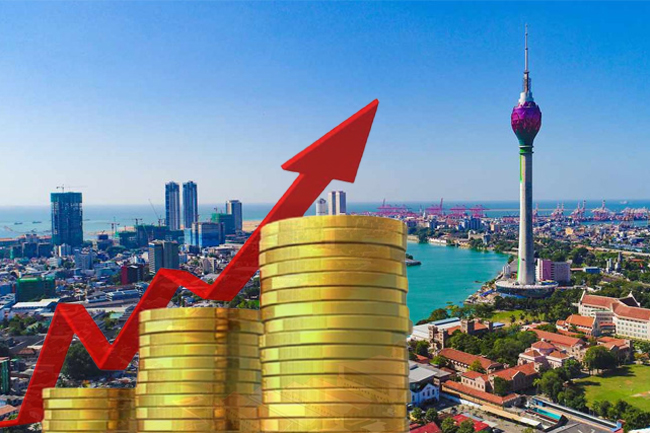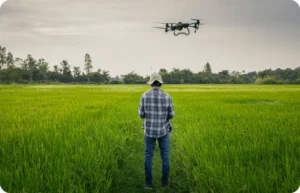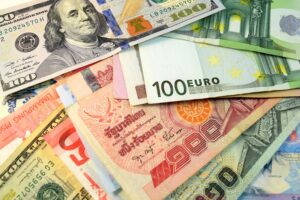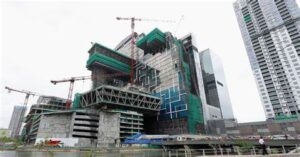
Sri Lanka needs an economic growth plan to avoid another crisis
- CNL Reporter
- February 15, 2025
- Weekly Economic Review
- Economic Review of the week
- 0 Comments
Economic Review of the week
Sri Lanka’s economy in 2025 is projected to show signs of stabilization with modest growth, controlled inflation, and ongoing debt restructuring efforts. Despite these positive developments, challenges such as high poverty levels and financial strain on households persist due to the lingering effects of the economic crisis. The country’s GDP is expected to grow by approximately 2.5%, while inflation is forecasted to hover around 5.5%.
A key priority remains managing the nation’s high public debt under the guidance of the International Monetary Fund (IMF). Debt restructuring continues to be a focal point in efforts to reduce the budget deficit and achieve a primary surplus. However, while stabilization measures are in place, the financial burden on households remains significant due to food insecurity, job losses, and stagnant real wages, potentially contributing to increased poverty levels.
Industrial and Agricultural Performance

The gradual recovery is expected to be bolstered by improvements in tourism, a revival of the private sector, and efforts to boost exports. In 2024, tea production experienced a year-on-year increase, particularly during the third and fourth quarters, due to favorable weather conditions. Rubber production also rebounded from earlier negative growth, achieving notable year-on-year growth by December. However, coconut production followed a declining trend throughout 2024, showing a significant year-on-year drop in December.
Industrial production showed positive momentum, with the Index of Industrial Production (IIP) increasing by 8.8% in December 2024 compared to the previous year. Key contributors to this growth were the food manufacturing sector (16.1%), the apparel industry (10.1%), and non-metallic mineral products (14.3%).
Currency and Foreign Reserves

As of mid-February 2025, total market liquidity remained in surplus, increasing from Rs. 144.294 billion at the end of the previous week to Rs. 175.088 billion. However, the Sri Lankan Rupee experienced a 1.3% depreciation against the US Dollar since the beginning of the year.
Foreign reserves have seen a gradual decline, with reserves dropping from USD 6,408 million in November 2024 to USD 5,986 million by the end of January 2025. Approximately USD 1,400 million of these reserves come from a currency swap agreement with China, meaning the actual usable reserves stand at around USD 4,550 million.
Given the nation’s import requirements, this reserve level is only sufficient to cover approximately three months of imports. With increasing foreign debt obligations in the future, experts emphasize the need for proactive measures to strengthen Sri Lanka’s foreign reserves.
Tourism and Worker Migration

Tourism has played a vital role in economic recovery, with tourist arrivals in January 2025 increasing to 252,761 from 208,253 in January 2024. Tourism revenue saw significant growth, with earnings reaching USD 362.1 million in December 2024 compared to USD 262 million in December 2023. For the entirety of 2024, Sri Lanka earned USD 3.17 billion from tourism, marking an improvement from USD 2.07 billion in 2023.
However, despite the boost in tourism revenue, a major concern remains the mass migration of skilled Sri Lankan workers. Many professionals continue to seek employment overseas due to the financial crisis, which has raised concerns about a potential ‘brain drain’ that could slow down economic recovery. In 2024, a record 312,836 individuals left the country, surpassing the previous year’s high of 310,953. Central Bank officials have warned that the continued outflow of skilled workers could significantly impact economic growth, particularly in key industries such as banking and manufacturing, which are already facing labor shortages.
Policy Changes and Foreign Investment

The government of President Anura Kumara Dissanayake recently relaxed a long-standing vehicle import ban, implementing a 50% surcharge on import duties. This move was expected to create pressure on foreign exchange reserves. However, Central Bank officials have stated that demand for foreign exchange has not significantly increased following the policy change. The Sri Lankan Rupee has remained relatively stable despite concerns of currency depreciation.
Sri Lanka’s import restrictions, initially imposed in 2020 to address foreign exchange shortages, continue to impact economic policy. The country still faces limitations on imports due to a flawed monetary framework, which has led to forex shortages and devaluation pressures. The IMF has advised an alternative approach, advocating for an exchange rate policy that does not rely solely on interest rates as a defensive measure.
International Financial Assistance and Development Projects

To support Sri Lanka’s recovery, the Asian Development Bank (ADB) is in talks to provide USD 900 million in financial assistance in 2025, following the USD 808 million granted in 2024. These funds will be directed towards critical sectors such as power, agriculture, finance, tourism, and skills development. The ADB has played a significant role in Sri Lanka’s economic recovery, having provided a total of USD 12.6 billion in assistance since 1966. In coordination with the IMF and World Bank, the ADB continues to prioritize financial aid for projects aimed at strengthening the country’s economic stability.
One of the key projects receiving financial backing in 2024 focused on the power sector, aimed at improving the reliability of the electricity supply and integrating renewable energy into the grid. Such projects are crucial for ensuring long-term economic stability and sustainable growth.
Conclusion
While Sri Lanka’s economic outlook for 2025 indicates modest progress, the road to full recovery remains challenging. Positive indicators such as declining inflation, growth in tourism, and improvements in industrial production provide some optimism. However, significant issues—including high poverty rates, declining foreign reserves, and the ongoing migration of skilled workers—continue to pose risks. Effective policy implementation, structural reforms, and international financial support will be crucial in ensuring sustainable economic recovery and long-term stability.

